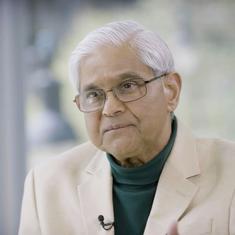If there was a moment that defined India’s control in the win over New Zealand in the Sultan Azlan Shah Cup in Malaysia on Saturday, it was the goal scored by Mandeep Singh. Control was the keyword in India’s opening strike during the 3-0 victory.
Chinglensana’s bouncy reverse-stick pass reached Mandeep at an awkward height, but with his arms tucked close to the chest and in slightly twisted position, the Junior World Cup star found the needed touch past goalkeeper Richard Joyce.
It was such dictatorial play from India, which coach Roelant Oltmans had sought when he said a day earlier that he “can live with” the draw against Great Britain, but was “not satisfied”. On Saturday, against the Blacks Sticks, the coach’s plans on the drawing board unfolded perfectly on the pitch. It reflected in the seven penalty corners earned by Indian strikers and not allowing New Zealand a single shot at goal after the first quarter.
That India converted only two of those seven PCs was the worrying factor, but it was heartening to see the young Harmanpreet Singh stepping up to slam two goals and come out of the slump he suffered at Rio Olympics and the Junior World Cup last year, though India won the latter tournament.
The Indian team played with a lot more desire against New Zealand. For sure, no rain delay on Saturday kept the anxiety of a long wait away, but the purpose in Indian sticks was devoid of any rust that allowed Great Britain rally to a draw a day earlier.
“For sure I am happier with the result, no doubt about it,” Oltmans said at the press conference. “I always prefer to win, there is no doubt. I think [also] performance-wise, the result is different.”
But the Dutchman is one of the most difficult coaches in the world to satisfy, and he wasn’t happy on Saturday when the first 15 minutes ended. “To be honest, I wasn’t happy with the first-quarter performance. Don’t know why we made too many mistakes in that period, may be we expected a different approach to the game by New Zealand. But after that, we were completely in control of the game, dictating the game.”
With the defence looking settled a day earlier and playing even better against New Zealand, allowing no goals, India’s pre-match target was to create more scoring opportunities. And they managed to tick that box.
The Harmanpreet factor
Playing in Malaysia, Harmanpreet comes into his own. It happened at the Sultan of Johor Cup in 2014, when he scored nine goals, and then again during the 2015 Junior Asia Cup, when the drag-flicker pumped in a staggering 14 goals, including four against Pakistan to win the final.

For the record, the 21-year-old defender even made his senior debut in Malaysia during the last Sultan Azlan Shah Cup. In Ipoh on Saturday, he returned to form and rocketed two flicks into
the New Zealand post to bag the Man-of-the-Match award.
And what Oltmans said afterwards could become prophetic by the 2018 World Cup in India. The coach said, “In maybe two years’ time, Harman will become the best drag-flicker in the world. He needs to perform in the coming tournaments and the best way to test him is give him more balls.”
It was perhaps the reason why Harmanpreet took six of the seven penalty corners India earned against New Zealand. Rupinder Pal Singh flicked at the last one and sent it wide.
‘Different game, different result’
It was Mandeep’s second goal in as many games, once again showing his knack of anticipation for the ball in the striking circle. However, the difficult-to-satisfy Oltmans said the good show by Indian forwards also had a lot to do with a different opposition.
“Must say our forwards played a different game than yesterday [Saturday]. But it always has to do with the opponent as well. It is always a battle between two teams. You can’t say because we created more penalty corners, our forwards were better than yesterday. Maybe the defence of Great Britain was better than New Zealand.”
But he was at ease with the “cohesion”, which he longed for from his boys. “One of the most important thing for me today was that we found more cohesion between the forwards and the midfield. It was an issue. But it [cohesion] happened, and I am pleased with that.”










